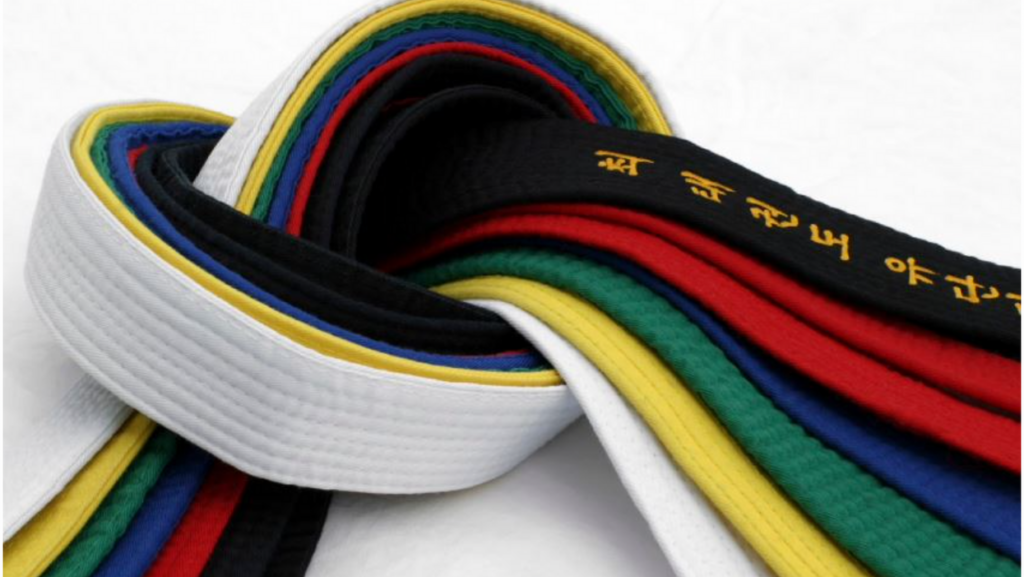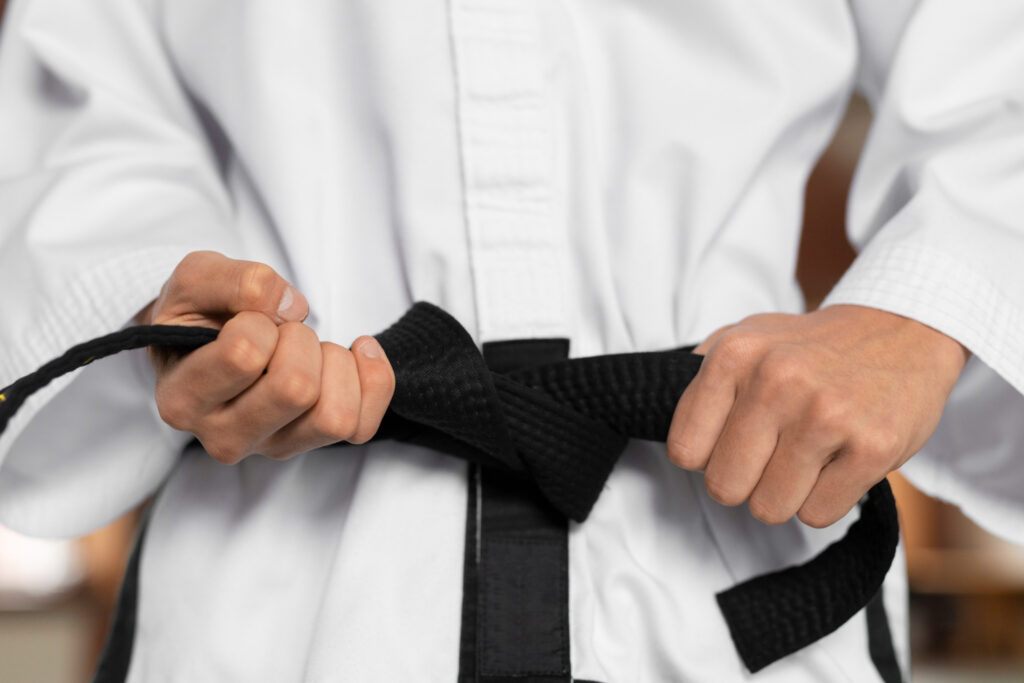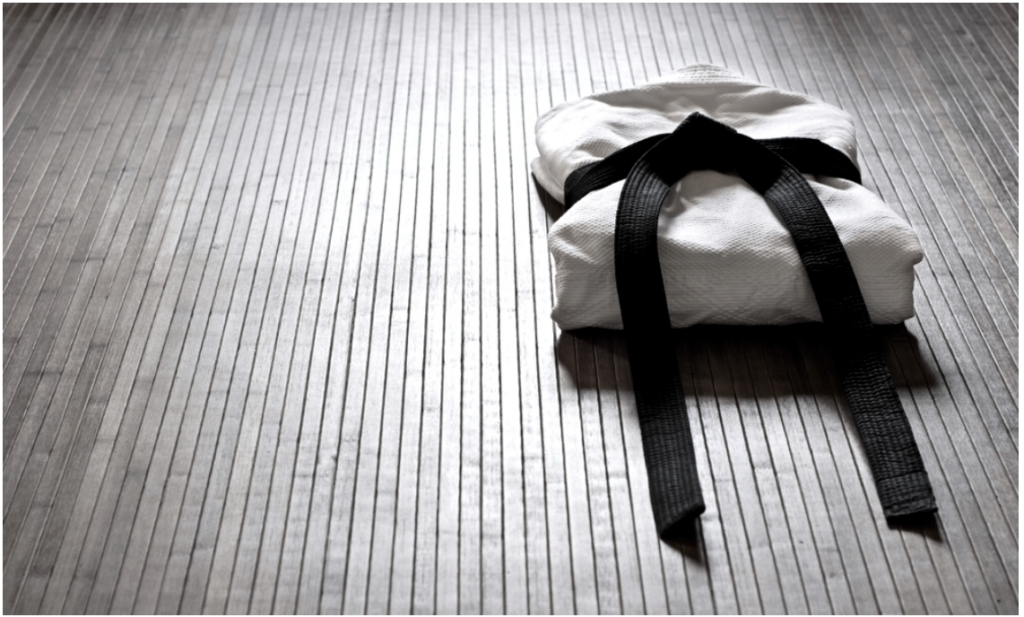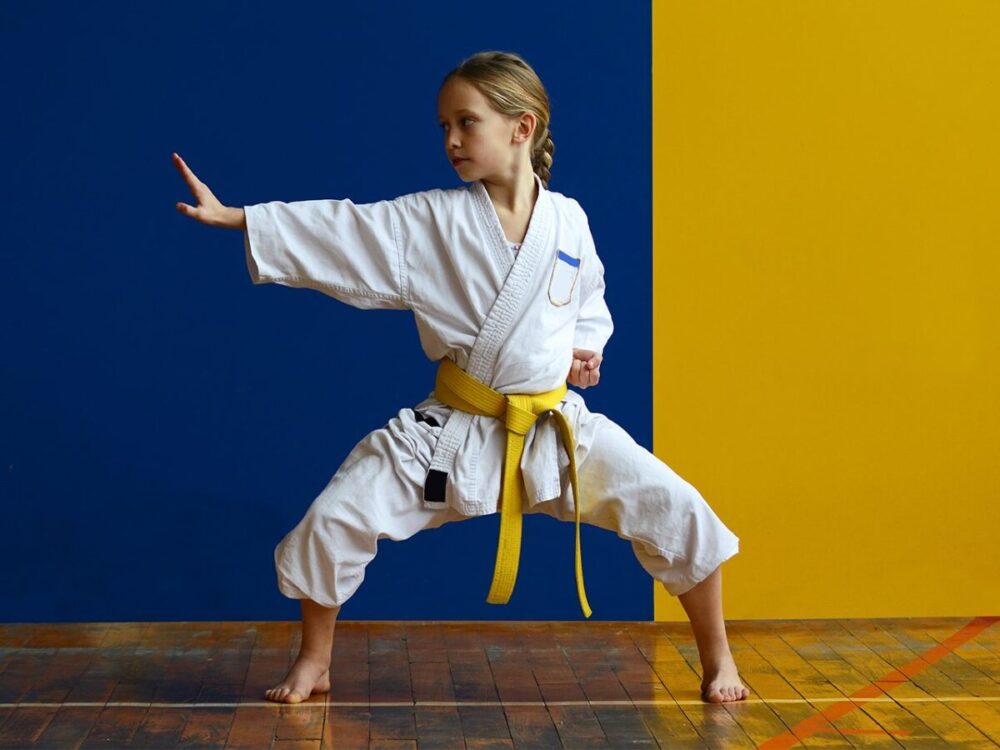The world of martial arts has long captivated both children and adults alike, and karate stands out as one of the most popular disciplines. As parents, it’s natural to want the best for our children, and enrolling them in karate classes can offer numerous benefits. But what exactly is the karate belt system?
This blog post aims to demystify the intricacies of the karate belt system for kids, providing valuable insights for parents. From the history and purpose of belts to their character-building potential, we’ll delve into how this system can empower and enrich a child’s life.
The History and Purpose of Karate Belts

The origins of the karate belt system can be traced back to the founder of modern karate, Gichin Funakoshi, who introduced it in the early 20th century. The colored belt progression was designed to visually represent a student’s proficiency and experience, starting with the white belt symbolizing purity and innocence.
As students advance through the ranks, they’re awarded different colored belts, each denoting a deeper understanding of the art. Beyond merely showcasing skill levels, the belt system instills humility and respect for tradition, fostering a sense of dedication and commitment to continuous learning.
For parents looking to enroll their kids in karate in Illinois, understanding the rich history and purpose behind the belt system can help them make an informed decision and support their child’s journey in martial arts.
How the Belt System Builds Character and Discipline
The belt system extends far beyond physical techniques; it serves as a powerful tool for molding a child’s character and instilling discipline. Training demands focus, perseverance, and respect for oneself and others. As kids work their way up from one belt to the next, they learn the value of patience and hard work.
The challenges they face on their journey enhance their self-confidence and resilience, building a strong foundation for success both inside and outside the dojo. This character development aspect sets it apart from other physical activities and makes it an ideal choice for parents seeking holistic growth for their children.
Different Karate Belt Levels Explained Simply

A series of colored belts, each of which denotes a different level of proficiency, make up the karate strap system. The core process is constant, even though colors can vary based on the karate style or school. A pupil typically progresses from white to yellow, orange, green, blue, purple, brown, and finally black belt.
The black itself is made up of several degrees, denoting ongoing skill development. It’s critical for parents to realize that strap advancement involves more than just time and takes into account a student’s technical proficiency, mental focus, and comprehension of karate’s philosophy.
Evaluating Readiness for Advancement in Belt Levels
The journey from one belt to another is a significant milestone in a child’s practice. However, advancement should not be rushed or taken lightly. Instructors employ a comprehensive evaluation process to determine if a student is prepared to move up to the next level.
This evaluation considers various aspects, including technical proficiency, physical fitness, mental attitude, and adherence to the principles. Parents should trust their child’s sensei, as they are experienced in assessing readiness objectively, ensuring that promotions are earned and not given as mere rewards.
Benefits of the Karate Belt System for Kids
Beyond improving one’s physical fitness and self-defense abilities, the sash system provides a number of advantages. Children gain a sense of success as they advance through the ranks, which raises their self-esteem and confidence. Sash progression goals offer children important life lessons like patience and determination, which they can use in their studies and other extracurricular activities.
In addition, the planned curriculum and emphasis on continuous development foster a nurturing environment where children can flourish socially and emotionally and form enduring friendships with others who share their interests.
Setting Realistic Goals and Expectations for Progression

While the karate strap system is an excellent motivator for kids, it’s essential for parents to set realistic goals and expectations. Each child progresses at their own pace, and some may take longer to grasp certain techniques or concepts.
As parents, we should celebrate their dedication and effort rather than placing undue emphasis on colors alone. Encouragement and positive reinforcement are vital to sustaining a child’s enthusiasm and passion for karate.
The Role of Parents in Supporting Their Child’s Karate Journey
As parents, our involvement in a child’s karate journey goes beyond enrollment in classes. Support and encouragement play a significant role in their development. Attending their classes and showing genuine interest in their progress fosters a sense of pride in their achievements.
Moreover, offering a listening ear and providing emotional support during times of frustration or setbacks strengthens their resolve to persevere. Balancing praise and constructive feedback ensures they understand that growth comes from both successes and challenges.
Addressing Challenges and Frustrations
Even though using the karate belt system can be a motivating experience, there are certain difficulties and frustrations.
If a child’s development appears to be slower than that of their peers, they may become disheartened. It’s important for parents to notice their children’s emotions and reassure them that development is not always linear. Moments of uncertainty can be handled by promoting a growth attitude and stressing the need for constant practice and effort.
Recognizing Achievements and Milestones

As children advance in the karate strap system, it’s essential to celebrate their achievements and milestones. Graduation ceremonies or tests offer opportunities to recognize their dedication and hard work.
Small rewards or gestures of acknowledgment from parents can further motivate them to continue their journey with enthusiasm. Additionally, setting new goals after each promotion keeps the excitement alive and ensures a continuous sense of purpose.
Conclusion: Empowering Kids Through the Karate Belt System
The karate belt system is not merely a color-coded hierarchy; it’s a profound instrument for empowering kids with valuable life skills. By understanding its history, purpose, and character-building potential, parents can fully appreciate the significance of their child’s karate journey.
The system teaches children discipline, perseverance, and humility while instilling a love for continuous learning. By setting realistic goals, providing unwavering support, and addressing challenges, parents become integral partners in their child’s karate success.
As each colored belt represents another step towards mastery, let us celebrate the growth, accomplishments, and transformation that the karate belt system brings to our children’s lives.





